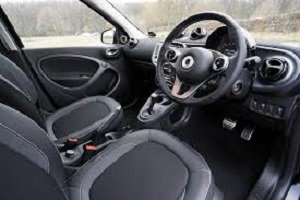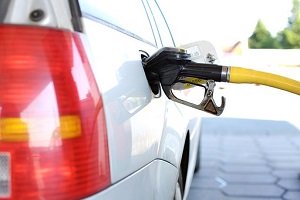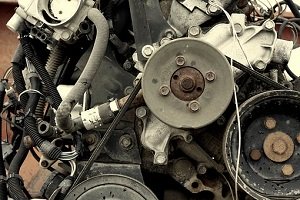Posted on 3/15/2018

Have you ever gotten a little too excited using your parking brake? At some point, most of us pull up just a little too hard and get our brake lever jammed. There are several situations that require a little extra braking power. Knowing when and how to use your brake will help you avoid sticky situations. When should I use my parking brake? If you drive a manual transmission you might use your emergency brake every time you park your vehicle. You might even be using it when you are driving! Those of us with automatics might only use our e-brakes when we are parked on a hill. In reality, you should use your parking brake all the time! When we park our vehicles it engages a device known as a parking pawl. This metal pin goes into a ring attached to the transmission. When in park, this pawl prevents the shaft in your transmission from turning. Parking pawls can break causing your vehicle to roll away. A parking brake is an added safeguard which can prevent your vehicl ... read more
Posted on 2/15/2018

Don’t you hate it when you try to find ways to save on gas and the first response you get is “drive less”? If that was an option, I wouldn’t be looking up solutions. Unfortunately, we all depend on our vehicles and we all have to drive. Which means we all have to buy gas. But how can we do all this and still save money? You can’t make it far in search results without coming across dozens of tips on how to make your gas go further. In case you’ve missed out, here are some of the best tips I’ve found on how to save. Drive Less- just kidding! Braking and Accelerating- Nothing is more taxing on your gas bill than excessive braking and acceleration. Steady is the name of the game. If you want to save money at the pump, don’t drive like it’s a race. Only brake when you need to and do so gradually. Also, avoid sudden accelerations that eat up gas and cost you money. Wind Resistance- an open window or a sunroof can be the hi ... read more
Posted on 1/12/2018

Your vehicle is made of many different parts. In fact, a single vehicle can have 30,000 components or more! With so many parts, it’s hard to keep track of what they all do. In order to maintain your vehicle’s performance, your belts are something you should be familiar with. They might not be good at keeping your pants up but the belts in your car play a big role in your vehicle’s performance. The major belts in your vehicle are the serpentine belt and timing belt. Serpentines are responsible for power steering pumps, cooling fans, injection pumps, air conditioning, and a variety of other functions depending on your vehicle. Sometimes serpentine belts can do it all! With one long snaking path, the serpentine belt winds in and out of several different components in your vehicle. It is made of extremely durable rubber with a smooth side controlling some parts and a ribbed side controlling others. If this belt breaks you will hear a squealing noise, your engine may ov ... read more
Posted on 12/28/2017

Let's talk about automotive performance. This term means a lot of things to a lot of people... from better handling, more speed, more off-road or track capability or even better fuel economy. For the purposes of this list, performance means one thing; getting where you are going sooner. Consider the following top pick performance upgrades if you want to put more power to the ground: Cold-air Intake - Factory air boxes are restrictive and are usually more about packaging under the hood than feeding your engine much-needed air. A less restrictive intake is an instant power adder. Bigger Throttle-body - The intake feeds the throttle body, the modern equivalent of the carburetor. The more air and fuel you can stuff into the engine the more power you can make. A higher CFM throttle-body allows more air to pass through your engine. Forced Induction - Turbos and Superchargers essentially have the same purpose; to stuff more air into yo ... read more
Posted on 11/30/2017
It used to be as common as falling leaves in autumn for people to work on their own cars. And while this red-blooded American pastime has not completely disappeared from our world, the expense and complexity of newer cars make some repairs best left to the professionals. Here is a quick list of, "Don't try this at home"' auto repairs:1. Check Engine Diagnostics - With everyone from big box parts stores to smartphone app developers making it possible to talk to the computer in your car, many drivers think they can deal with a check engine light themselves. Here's the problem: many check engine codes are vague and require more sophisticated equipment to really get to the bottom of the story. And please don't just turn the light off thinking you will fix the problem. This is like trying to cure a heart attack by unplugging the EKG. Let the pros read the codes, apply their educated ability to decipher the codes and get the root cause of the problem cured.2. Tir ... read more